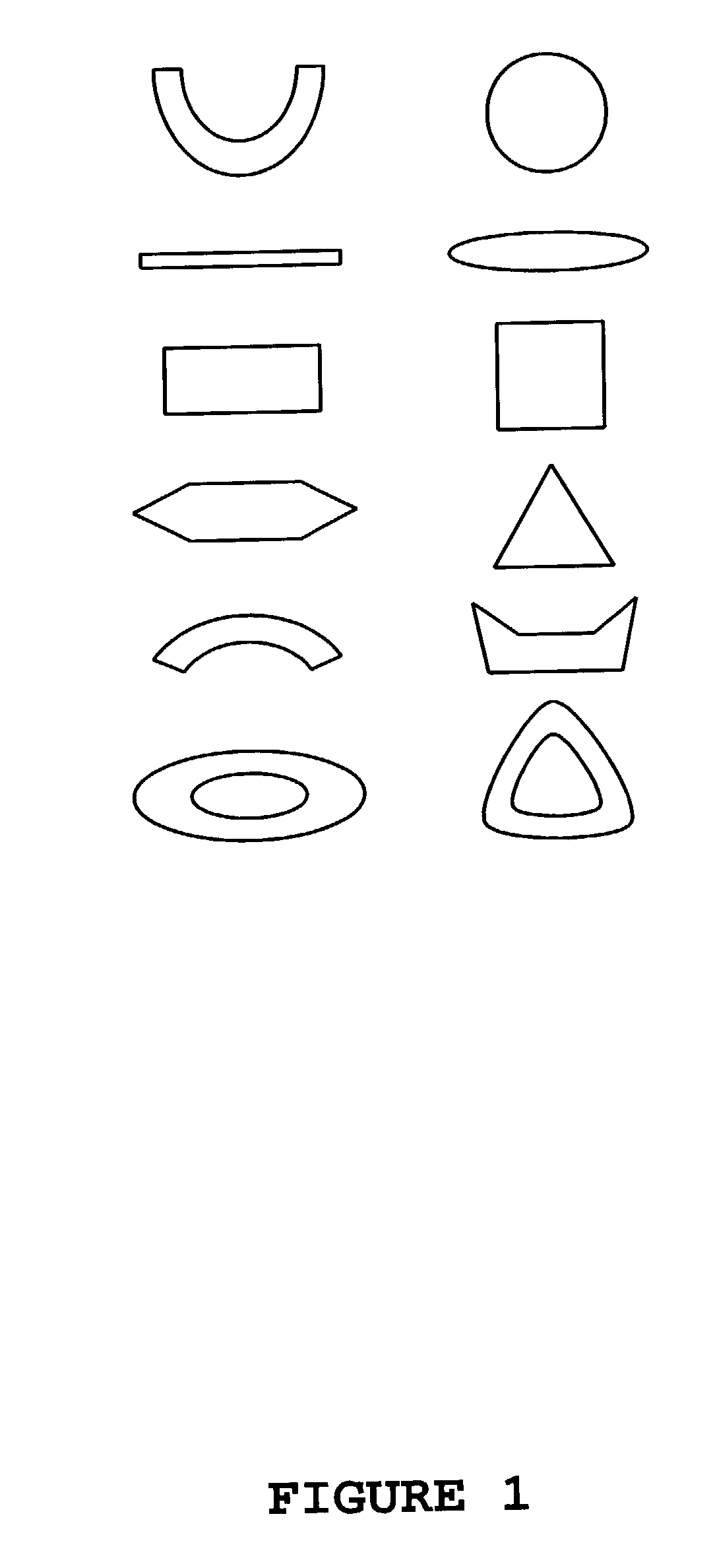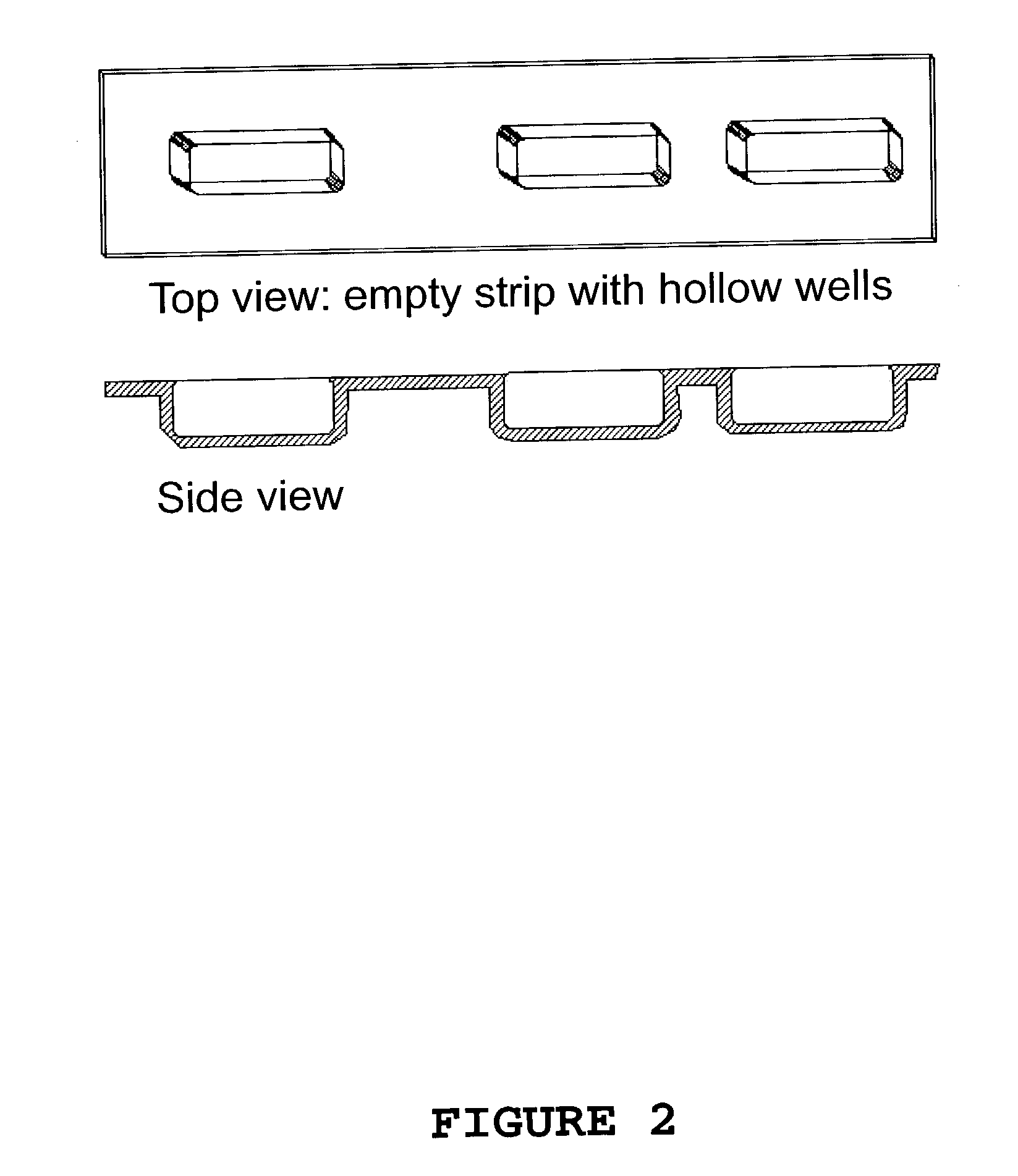Drug dose-form and method of manufacture
- Summary
- Abstract
- Description
- Claims
- Application Information
AI Technical Summary
Benefits of technology
Problems solved by technology
Method used
Image
Examples
example 1
Starch Film (IR) PP / COC / PP
[0044]Instant Pure-Cote® B792 is a proprietary, cold water dispersible, modified starch manufactured by Grain Processing Corporation, Muscatine, Iowa. The PP / COC / PP film (Topas®) was used as the dose form platform with PAM® as the release agent. The aqueous casting solution contained 20% B792 and 5% w / w glycerin as a plasticizer. After 24 hours at 105° C., the loss on drying (LOD) of the casting solution was determined and indicated a nonvolatile solids (NVS) of 24.93% which is in good agreement with the 25.0% target make up. The total solution mass to be dried was 0.1745 g divided equally into the three blister pack wells of FIG. 2. After 65 minutes in the IR drying tunnel the net remaining weight was 111% of the theoretical NVS. The oval shaped dose forms released well from the molding cavity. The doses were transparent and averaged 7-9 mils thick. While exhibiting some flexibility, they could be broken by severe bending indicating that more plasticizer a...
example 2
Carboxymethyl Cellulose Film (IR) PP / COC / PP
[0045]A food-grade, low viscosity (45 centipoise for a 2.0% w / w solution as measured with a Brookfield RV viscometer employing spindle #1) sodium carboxymethyl cellulose (CMC) was used to prepare an aqueous 5.0% w / w total NVS solution containing 4.0% CMC and 1% erythritol. The total solution to be dried (0.7083 g) was divided equally over the three wells of the test BP strip. After 45 minutes exposure in the IR drying tunnel the final net weight was 105% of the theoretical NVS yielding three dose form films averaging 13 mg each. The film patches were clear and flexible and released readily from the BP film mold platform.
example 3
Pullulan Film (IR) PP / COC / PP
[0046]Pullulan is a linear glucan consisting of repeating maltotriose units linked by α-D-(1-6) linkages. It forms low viscosity solutions in the 10% to 20% range. The pullulan used, PF-20, was obtained from Hayashibara Co. LTD., Japan. The polymer forms clear films with high tensile strength and both dries and rehydrates rapidly. Two aqueous pullulan solutions each with different plasticizers were prepared at a total NVS of 16.5% w / w containing 20% of the total NVS as plasticizer. The plasticizers used were monoacetin and erythritol. The sample BP strip was loaded with 500 to 600 mg of solution divided equally between the three wells and dried in the IR drying tunnel. After 45 minutes the monoacetin and erythritol plasticized films had dried to 110% and 105% of their theoretical NVS content, respectively. The erythritol containing film was clear and the monoacetin film was white and opaque. Both films released easily and were moderately flexible. Each fi...
PUM
| Property | Measurement | Unit |
|---|---|---|
| Frequency | aaaaa | aaaaa |
| Frequency | aaaaa | aaaaa |
| Frequency | aaaaa | aaaaa |
Abstract
Description
Claims
Application Information
 Login to View More
Login to View More - R&D
- Intellectual Property
- Life Sciences
- Materials
- Tech Scout
- Unparalleled Data Quality
- Higher Quality Content
- 60% Fewer Hallucinations
Browse by: Latest US Patents, China's latest patents, Technical Efficacy Thesaurus, Application Domain, Technology Topic, Popular Technical Reports.
© 2025 PatSnap. All rights reserved.Legal|Privacy policy|Modern Slavery Act Transparency Statement|Sitemap|About US| Contact US: help@patsnap.com



